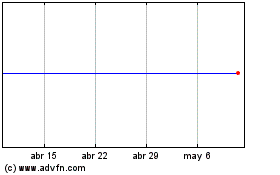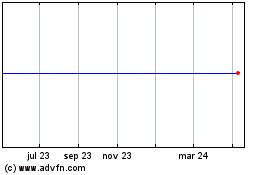At least two people died when a powerful earthquake struck New
Zealand near the city of Christchurch, causing strong jolts felt
more than 120 miles away and prompting a tsunami threat along the
country's east coast.
The quake, which the U.S. Geological Survey initially recorded
as magnitude 7.4 but later raised to 7.8, struck just after
midnight Sunday and was centered 93 kilometers (57 miles) northeast
of Christchurch, on the country's South Island.
New Zealand Prime Minister John Key said at least two people
were killed, but provided no details at a news conference Monday
morning in Wellington, the capital.
New Zealand's Ministry of Civil Defence and Emergency Management
said on its verified Twitter account that a tsunami threat covered
all of New Zealand's east coast, including Christchurch, Wellington
and the Chatham Islands, and urged people in those areas to move to
high ground or go inland.
The agency later said the first wave had arrived on the
northeastern coast of the South Island, but didn't say how tall it
was. "The first wave may not be the largest. Waves may continue for
several hours," MCDEM said on Twitter. At 6.09 a.m. local time, the
tsunami threat was downgraded for much of the east coast, although
the agency continued to warn of unusually strong currents and
unpredictable flows of water close to shore.
The USGS said the quake was at a depth of 23 kilometers. The
quake was followed by a number of strong aftershocks.
New Zealand Police said one casualty had been reported at a
collapsed property in Kaikoura, a coastal town on the country's
South Island. "Police are also trying to access a property at Mt
Lyford, north of Christchurch, where a further casualty has been
reported, which is believed to be a fatality," it said.
In Wellington, 214 kilometers north of the quake's epicenter,
people were urged not to travel into the city as train and ferry
services were suspended and some roads could be blocked. However,
the city's airport remained open following an inspection of the
runway.
U.S. Secretary of State John Kerry had just completed a visit to
New Zealand, leaving for Oman hours before the earthquake
struck.
New Zealand is part of the Pacific Ring of Fire, an arc of
volcanoes and fault lines encircling the Pacific Ocean prone to
seismic upheaval. In 2011, a 6.3-magnitude quake killed 185 people
in Christchurch—most because of building failures—triggering a
nationwide clampdown on unsafe properties.
When the latest quake hit, Christchurch resident Hannah Gin had
just sat down in her living room to watch a replay of the recent
All Blacks versus Italy rugby union match when her house started
shaking, she told the Associated Press. Upstairs, her mother let
out a scream.
Ms. Gin, a 24-year-old lifelong Christchurch resident, is
accustomed to quakes, so she said she sat calmly and waited,
figuring the rumbling would stop in a few seconds. Instead, the
shaking just went on and on—for at least three minutes, according
to the clock on her phone, she told AP by phone.
The quake was far less violent than the one that struck her city
in 2011, she said, adding that there was no jarring up and down or
side to side, just a long, rolling sensation. But it went on for
much longer than the typical quakes that strike the area, she
said.
"I could hear the sliding door sliding back and forth and we've
got washing hanging up and I could see the washing moving," Ms. Gin
told AP. "It just kept going and going." Her house, which was
damaged in the 2011 quake, didn't appear to have sustained any
damage from the latest quake, she said.
The quake also knocked out New Zealand's emergency call number,
111, for about 10 minutes, the AP reported, citing police.
Stephen Horrell runs a bed and breakfast five minutes outside of
Kaikoura, 180 kilometers north of Christchurch, where much of the
worst damage was reported.
He was asleep on the third floor of his establishment when the
quake struck.
"There was a big jolt and there was rolling, he said. "It was so
strong that when I tried to get out of bed it just rolled you over.
It was impossible to stand.
"We just started grabbing stuff. Blankets, some food, our
phones. But there was no power and so no light. It's amazing what
you can't find when there is absolutely no light."
Mr. Horrell and some of his neighbors drove up a hill near the
property and waited until sunrise before moving on.
In Wellington, 214 kilometers north of the quake's epicenter,
power was knocked out in some places, and some windows were smashed
and some chimneys collapsed, the AP reported. It caused items to
fall from shelves and windows to break in Wellington, and forced
hundreds of people on to the streets as hotels were evacuated, AP
said.
"You couldn't really stand up, you just had to force yourself up
from the carpet and try to move along to get hold of the doorway,"
said Christine Hay, who runs the Bella Vista Motel in Wellington, a
few minutes' drive from the central business district. Three of the
motel's 16 units were unlet prior to the quake, but quickly filled
with guests who had fled high-rise accommodation closer to the
city, she said.
Australia's Bureau of Meteorology said there was no tsunami
threat to the country.
Write to David Winning at david.winning@wsj.com and Lucy Craymer
at Lucy.Craymer@wsj.com
(END) Dow Jones Newswires
November 13, 2016 20:15 ET (01:15 GMT)
Copyright (c) 2016 Dow Jones & Company, Inc.
Twitter (NYSE:TWTR)
Gráfica de Acción Histórica
De Jun 2024 a Jul 2024

Twitter (NYSE:TWTR)
Gráfica de Acción Histórica
De Jul 2023 a Jul 2024
